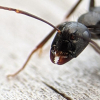Is it just me, or the queen ants I capture nowadays die pretty quickly for example: I had a myrmecina americana queen but she died after the third day (probably infertile) and some other queens I find, just die on the spot after arriving.
So am i doing something wrong?
Please give me tips on how to stop them from dying.
Currently keeping:
1x Formica subsericea, (used to be polygynous) 20+ workers
1x Lasius umbratus, (Workers accepted) 25 workers with host brood (I think they are dead now lol)
1x Crematogaster cerasi 4 workers with brood (still growing)
As you watch your ants march, remember: every journey begins with a single step (or queen)-not just towards you, but towards a future woven by diligence and shared dreams - Me
(I lost braincells just to make this quote)



















